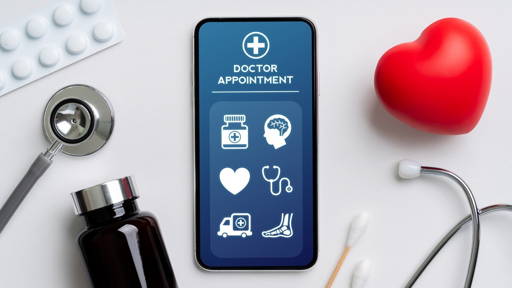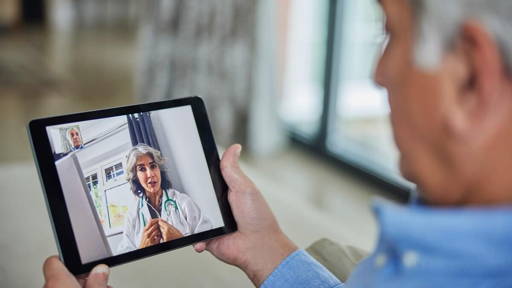The clinical trial sought to answer two overarching questions: Is it feasible to run an entirely digital, randomized clinical trial successfully? And is it possible to encourage people to exercise more by using a smartphone app? The study, overseen by Euan Ashley, professor of medicine, of genetics and biomedical data science at Stanford University School of Medicine, shows that the answer to both questions is yes.
Ashley and his colleagues conducted a clinical trial using MyHeart Counts, an app he and other scientists at Stanford developed using Apple’s ResearchKit platform. The app, which was first deployed on smartphones in 2015, was launched to help track physical activity and other heart-related information, such as heart rate. Now, it’s the main tool for a full-on randomised clinical trial, including patient recruitment, consent and interventions. It also returns data to participants.
“In this digital era, we have to think of ways to engage people in their health,” he said. “The number of smartphone users these days is huge, and using an app to host the trial lets us tap into that population. If people are addicted to their phones, maybe we can also get them addicted to their health.”
On a weekly, rotating basis, the digital trial “prescribed” one of four simple interventions for each participant enrolled in MyHeart Counts – things like reminders to walk more or stand up. In the end, the prompts worked, although modestly so. Regardless of the type of intervention, Ashley and his team saw about a 10% increase in activity compared with the participants’ baselines. A paper detailing the findings of this study was published online in Lancet Digital Health.
Mobile motivation
About a year after the launch of the MyHeart Counts app, Ashley opened up enrolment for the clinical trial. Over nearly 18 months, 1075 participants enrolled and completed at least one intervention, and 493 completed the entire trial.
An 80% dropout rate would spell the end of most trials, but not in this one. “In the digital world, there’s quite a low bar for entry – you can sign up while you're standing in line for coffee – so there’s a low bar for exiting a trial too,” Ashley said. A clinical trial of 100 people is considered normal, if not significant, and even with the high dropout rate, the MyHeart Counts digital clinical trial ended up with about five times that number.
Digital platforms allow us to connect directly to the patients in a way that’s more immediate and more extensive
During the first week of the trial, participants lived their lives without extra instruction from the app. In this way, they established their own baseline and served as their own control. After the initial week, each participant was randomly assigned to one of four different “soft-touch” interventions: encouragement to take more steps, hourly reminders to stand up, instructions to read health guidelines from the American Heart Association, or personalized “e-coaching” that involved a daily message to participants based on their routine activities. Those who reported a more sedentary lifestyle might receive a message prompting a Sunday morning walk, while those who are naturally more active might receive encouragement to keep up consistent physical activity. Every week, participants completed a new intervention until they’d experienced all four.
Among almost 500 participants, the bump in activity, measured through step count, was modest – a 10% increase – but still statistically significant. “Sure, we would have rather seen a 300% increase, but with the light-touch interventions that we chose, it was probably never realistic to expect those numbers,” Ashley said. “But the main takeaway is that at the end of the day, we find that there’s a real, small positive effect from these interventions.” And, he said, the study also serves as a template for all-digital randomised clinical trials in the future.
A trend toward digital
Now, Ashley and his colleagues want to investigate further. In their next trial, they plan to ask more nuanced questions: How long do the participants keep up the extra steps? And, is it possible to enhance the results by increasing the intensity of the intervention, tailoring the intervention to a person’s specific motivations, or lengthening the duration of the trial?
Down the line, Ashley sees value in personalising the interventions more to an individual’s motivations and goals. “We don’t want to make it too complicated. And we aren’t ignoring the fact that even a single simple prompt did increase steps,” he said. “But different things motivate different people, and if we can play to that, it may help participants reach a new level of activity.”
Down the line, Ashley sees value in personalising the interventions more to an individual’s motivations and goals. “We don’t want to make it too complicated. And we aren’t ignoring the fact that even a single simple prompt did increase steps,” he said. “But different things motivate different people, and if we can play to that, it may help participants reach a new level of activity.”
Outside of future MyHeart Counts trials, Ashley and his team are starting to partner with other scientists to help them carry out their own digital clinical trials in areas such as heart transplant recovery and pulmonary hypertension. “Digital platforms allow us to connect directly to the patients in a way that’s more immediate and more extensive,” Ashley said. “And I think this type of more direct sensor-based measurement can not only help patients enhance their health, but help doctors notice health issues early on and address them sooner.”
Source: Stanford Medicine
Subtitles
Euan Ashley is the senior author of a paper that reports on the results of the first entirely digital, randomised clinical trial, which used a smartphone app to encourage participants to get more exercise (photo credit: Mark Tuschman).






